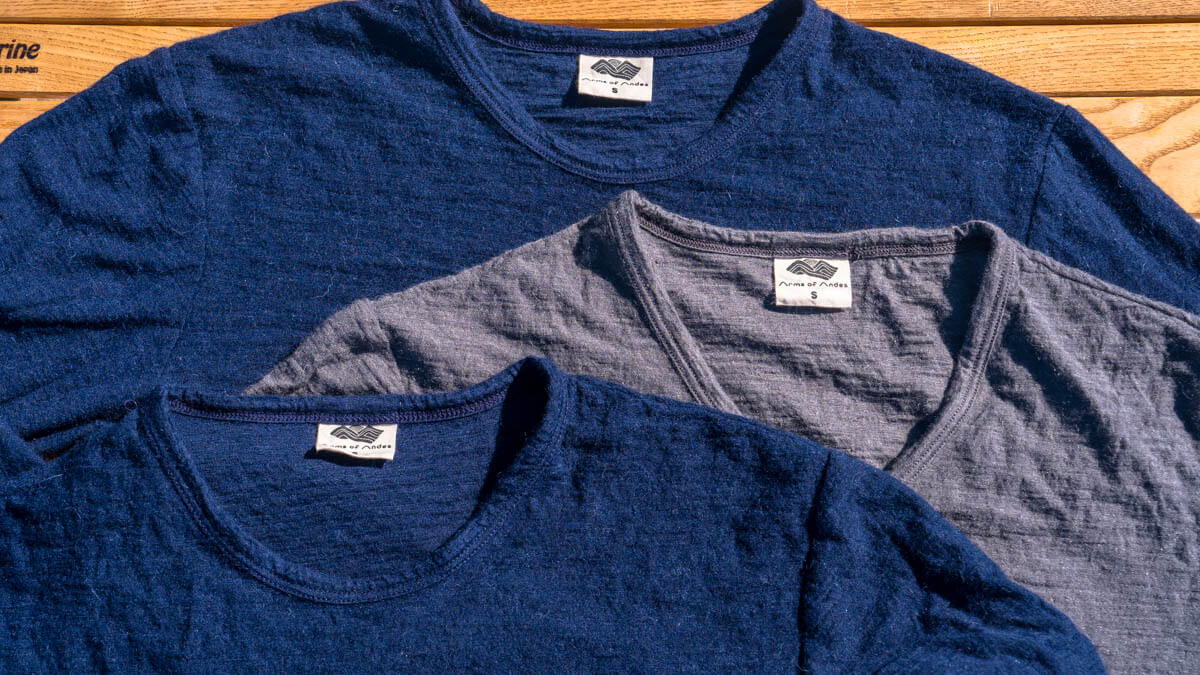
[A self-paid review without any consideration] This winter, alpaca wool has been hot with its heat retention and sweat-removing ability, which surpasses merino wool. "Arms of Andes" base layer review
OGZ Membership Recruitment
The base layer of alpaca wool is so worn on winter underwear that it's a hot topic for me.
These days, the idea that "merino wool base layers are good" is becoming common knowledge for outdoor enthusiasts.
Of course, I have no objection to that, but the world is wide and nature is deep. There must be fibers somewhere on the earth that are more functional and gentle on the earth than you've seen. For mountain tools lovers like me who can't help but explore the best layers, the search for the ideal layering is not over, and the quest for unknown materials continues.
In 2023, I observed on a certain American outdoor message board that new, highly functional natural materials that could finally replace merino wool are being born. This is the new natural fiber "alpaca wool" that has been heard a lot in the outdoor world since around last year.
In fact, the alpaca wool fiber itself has already existed for quite some time, and I have been using several pairs of alpaca wool socks for several years. It was very comfortable and durable, so I didn't know about the existence and goodness of this fiber.
I learned about the "base layer" made from alpaca wool around summer last year.
To be honest, I was surprised that alpaca wool would still be used in a base layer that requires more delicateness, such as texture, comfort, elasticity, thinness and lightness. Now that I've already learned this, I can't help but look into it.
There are several manufacturers that handle base layers for alpaca wool, but as far as I can see, the only manufacturers that have never heard of Arms of Andes
Arms of Andes is a new brand that was launched five or six years ago by four Los Angeles-based siblings, with Peruvian roots. As it is emerging, it is very sympathetic to not only pursue the possibilities of the new material, alpaca wool, but also to implement sustainable business practices involving Peruvian farmers and to inherit the traditional Peruvian culture (the brand name "Arms" combines the initials of the first names of their four siblings).
Unfortunately, it is not yet available in Japan, so this alpaca wool base layer (long sleeve, short sleeve, short sleeve, and short sleeve V-neck three-piece set) through personal import. It was on sale so each item costs less than 10,000 yen. There was a bit of duty, but the price is not bad.
I've tried it out on many activities this winter, so I'll be looking forward to reviewing it right away.
table of contents
- Arms of Andes Alpaca Wool Shirt 160 Ultralight Base Layer Main Specifications and Evaluations
- Introduction: What kind of fiber is "alpaca wool"? What's so great compared to merino wool?
- High-performance fibers have been collected from alpacas living in highlands over 3,000m and have been valued since ancient times as "the fiber of the gods."
- It is lighter and warmer than merino wool, has natural breathability, and is highly temperature-controlled and sweat-absorbent and quick-drying?
- Is it stronger than merino wool?
- Is it softer, smoother and less irritating than merino wool (≒ comfortable to wear)?
- I tried wearing various clothes this winter, detailed reviews
- Comfort and comfort: It's a bit quirky when you start wearing it, but the "light, fluffy, smooth" texture you've never experienced before makes you addictive
- Heat retention and sweat treatment performance: Thin and light, but surprisingly warm, and less cold sweat during activities
- Odor-resistant: Like other wool, there is no odor or discomfort even after wearing for a few days.
- Care: No need to wash your hands and no pilling. The peace of mind is that you can wash it normally in the washing machine.
- Summary: Merino wool is entering a new era.
- Arms of Andes Base Layer Details and Purchase
Arms of Andes Alpaca Wool Shirt 160 Ultralight Base Layer Main Specifications and Evaluations
Favorite points
- Thin but quite warm
- light
- Stretchy and easy to move
- Temperature adjustment
- Sweat-absorbent and quick-drying
- Natural deodorant
- Durable (resistant to tears and pills)
- 100% biodegradable (natural dye model)
Interesting points
- The only thing I'm concerned about is the first time I wear it, but it has a slightly tingling sensation (soaking it in a rinse or washing it several times will ease it)
- The hem rises while you are on the move (I wish the length on the back was made longer)
- The flat seams on the lining are better because there is less grounding.
- At the moment, I have no choice but to obtain personal imports.
| item | Arms of Andes Alpaca Wool Shirt 160 Ultralight |
|---|---|
| material | 100% Royal Alpaca Wool (Low Impact Dyeing and Oekotex® Production) |
| Fabric thickness | Under 18 microns / 160g/m2 |
| Actual weight (g) | 149.1 (S size long sleeve crew) |
| Variations |
|
| Color variations | 9 types containing natural dyes |
| Sam Hall | × |
| Outdoor Gearzine Rating | |
| Comfort | ★★★☆☆ |
| Thermal insulation | ★★★★★ |
| Breathable | ★★★★☆ |
| Quick drying | ★★★★☆ |
| Ease of movement | ★★★★☆ |
| Durability | ★★★★☆ |
| weight | ★★★★★ |
Introduction: What kind of fiber is "alpaca wool"? What's so great compared to merino wool?
Before reviewing the product immediately, I didn't really know the characteristics of the alpaca wool fiber itself, so the Arms of Andes website and several other materials, roughly below.
High-performance fibers have been collected from alpacas living in highlands over 3,000m and have been valued since ancient times as "the fiber of the gods."
In the first place, alpacas are animals of the camel family that have been traditionally raised as livestock in South American highlands such as Peru and Bolivia. Unlike the relative llama, whose main purpose was to transport freight, alpacas were raised in ancient times for the purpose of soft, high-grade fibers, and it is said that during the Inca Empire, alpaca hair was also used to manufacture royal clothing as "the fiber of the gods."
After that, the culture of alpaca fiber was temporarily destroyed by the Spanish who invaded, and was revived in the 19th century...I will skip the details here, but personally I found it quite interesting, so if you're interested, I recommend reading " The History of Alpaca Wool
It is lighter and warmer than merino wool, has natural breathability, and is highly temperature-controlled and sweat-absorbent and quick-drying?
Alpacas have survived the highlands of the South American Andes Mountains, over 3,000 meters long, and have been breeding for thousands of years, wrapping their bodies in alpaca wool to protect themselves in the harsh environment of sun shining during the day and freezing cold at night.
For this reason, alpaca wool fibers are said to have exceptional heat retention among natural fibers, including merino wool, so that they can handle sudden temperature changes. One of the main reasons is that unlike wool, the alpaca wool fibers have a "semi-hollow structure" with a cavity in the center. The mechanism is that the air accumulated here creates a high insulation effect.
This semi-hollow structure not only provides insulation, but also leads to natural breathability and lightness. When the fibers move, fresh air circulates as if breathing, releasing unnecessary heat. It keeps you warm and natural and comfortable without storing too much heat, and keeps you from stuffy even during intense activities. In addition, alpaca wool absorbs less moisture than other wools ( merino wool has a moisture absorption rate of about 30% of its weight, while alpaca wool is about 10-11% ), making it easier to stay dry and comfortable even in sweaty activities.
Is it stronger than merino wool?
Alpaca wool is a stronger and more durable fiber than merino wool (of course, the strength, durability and lifespan of each fiber also differ depending on the manufacturing method and thickness). shown that alpacas have tensile strength of 50, while merinos have tensile strength of 30-40 . Also, due to its structural properties, alpaca wool is a fiber that is less likely to wear out, such as "hair loss, pilling, and losing its shape," and in that sense it can be said that it "lasts longer" than merino wool.
Is it softer, smoother and less irritating than merino wool (≒ comfortable to wear)?
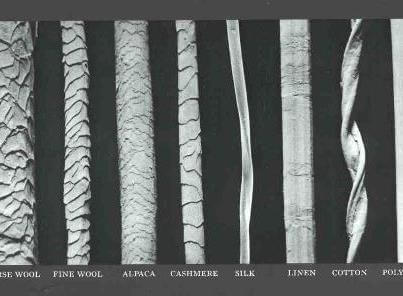 The surface of wool fibers has fine scales (scales), which help with moisture control and prevent dirt from occurring, while also creating a slightly tingling sensation.
The surface of wool fibers has fine scales (scales), which help with moisture control and prevent dirt from occurring, while also creating a slightly tingling sensation.
Alpaca fibers have a smaller scale than merino wool, and have a smooth, uniform surface, and are said to be moist and smooth on the skin and have less "tingling" feel, as their hair is straight and contains oil. Wool also does not contain wax substances called "lanolin" that can cause irritating allergic reactions that are naturally present. Furthermore, the finest quality alpaca fibers called Royal Alpacas (like those used in Arms of Andes' base layers) are said to be as thin as high-quality merino wool (it is said to be less than 21 microns in diameter), and are smooth to the touch and less tingling.
To sum up this, alpaca wool is roughly said to be " lighter, softer, stronger, warmer, and has low water retention (= quick-drying) wool ." If you listen to this, you won't be able to find a place where mountain lovers who are hot or cold will be excited.
I tried wearing various clothes this winter, detailed reviews
Comfort and comfort: It's a bit quirky when you start wearing it, but the "light, fluffy, smooth" texture you've never experienced before makes you addictive
Preliminary research has led to an increase in expectations. I was beginning to fall into the trap of overseas mail order, and I had a month of trouble (delay) before it arrived, but somehow, after New Year's, I finally got a base layer of alpaca wool. The texture is fine and has a subtle texture, and although it is thin, it has a fluffy, voluminous feel. The slightly uneven dyeing method also has a flavour, and the first impression was quite good.
A slight "tingling sensation" that is bothering you
However, when I put it on, I felt a bit uncomfortable.
As for fitting, it fits perfectly with the body lines, but is not too tight, and has a very comfortable fit and gives it a beautiful silhouette. Alpaca wool is also more elastic than you would imagine and is extremely easy to move around in. It will be easy to adapt to a variety of body types.

Size S (176cm, 63kg). It was almost the right size, but I'm concerned about the upswing of the back hem, so I might choose the M size next time I buy it.
However, one thing that really bothered me was the "tingling sensation" that I felt when I wore it, although it was a very small amount. It's not so uncomfortable that it's hard to wear, and you'll forget it while you're on the move, but I couldn't help but notice the subtle irritation to the skin, which I'd never felt before with the merino wool base layer for mountain climbing.
Relieve any tingling sensations that bothers you
So I thought I could somehow prevent this tingling, and when I soaked it in a rinse (or conditioner) after washing, just like with wool, the tingling sensation was eliminated to a degree that almost didn't bother me. Also, I think I've just got used to this, but I feel like I'm getting less tingling even after wearing a lot and washing it a lot. Another effective way to indirectly relieve the tingling sensation was Millet Drynamic Mesh and then wear this base layer over it.
Why did it get tingling? As mentioned above, it is true that alpaca wool is a structurally "low-irritating and resistant to tingling." According to the brand, the fibers used in this base layer are the rarest and thinnest of all types of alpaca wool (with a diameter of less than 18 microns), and therefore the softest fiber, "Royal Alpaca Wool."
However, alpaca hair is not covered with a single type of hair, and it is not uniform depending on age or part, and the quality varies depending on the spinning technique. Alpaca wool production technology must be still in the development, and not every manufacturer is always finished with high quality threads. For this reason, it is not yet possible to say that there are no technical or quality control issues yet, and it may take a little more time to consider the comfort issues of alpaca wool products, which are just beginning.
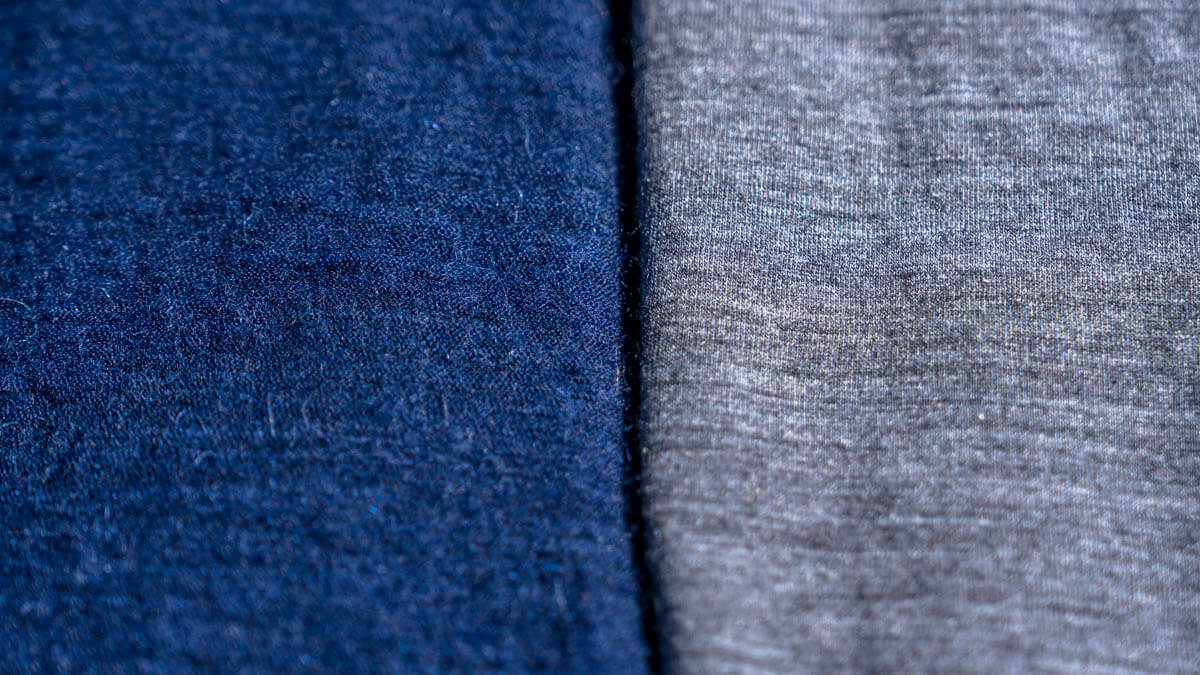
Alpaca wool (left) has a slightly wrinkled texture than merino wool (right), and the subtle unevenness and brushed texture give it a fluffy and voluminous feel.
Unfortunately, it is not designed for authentic winter outdoor use.
Another thing is that this shirt is inherently positioned, but I also need to mention that it is not designed to be suitable for serious outdoor activities.
For example, the lining lining around the shoulders is not flat seam, so there may be slight bumps, and the back hem is not long, so if you move your upper body while you are moving your back hem, the hem of your back will slip up. If you are targeting outdoor enthusiasts, I would definitely like to see this in future updates.
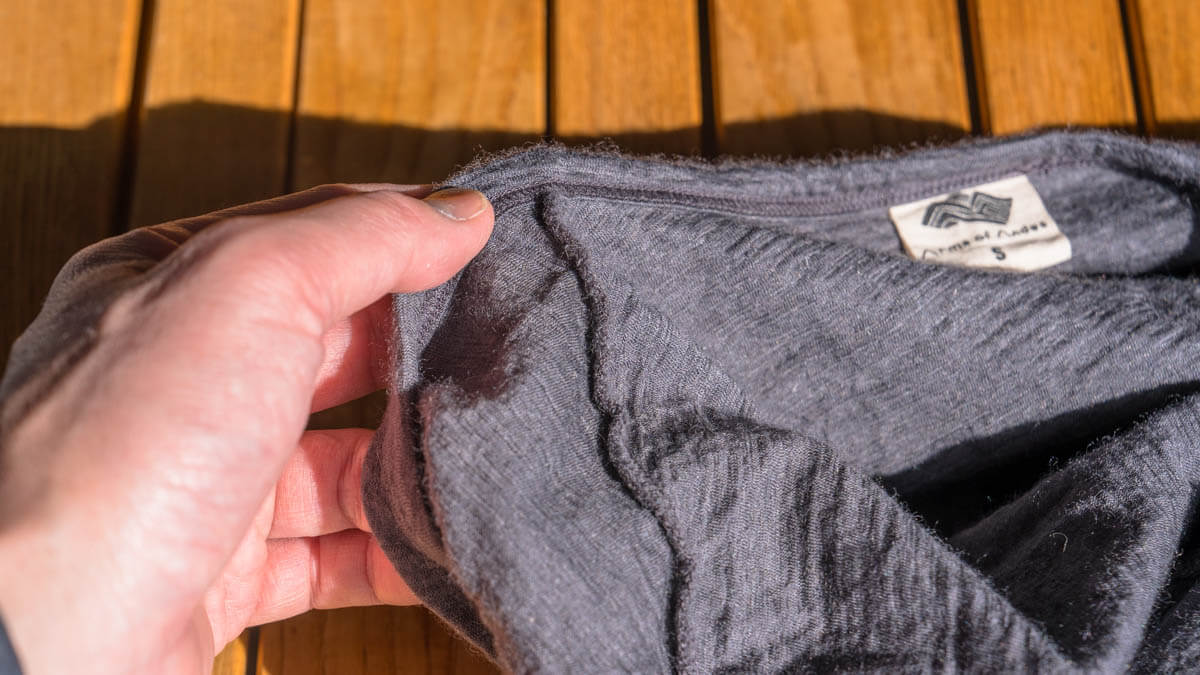
The seams around the shoulders are not the flat seams that are often used in outdoor base layers, but rather the standard sewing method, so it cannot be said that there is no grounding.
Heat retention and sweat treatment performance: Thin and light, but surprisingly warm, and less cold sweat during activities
The overwhelming heat retention performance unique to alpacas
I felt like I was suddenly turned on and lost my nose, but when I regained my mind and actually took action, I was surprised and I never knew there was such a warm base layer. This amazing high heat retention made me think that a slight tingling is a minor problem.
I'm wearing it at 149 grams, and it's quite thin, almost like a summer base layer. Despite this, the soft, natural warmth spreads across your skin the moment you wear it, and eventually you'll feel as if you were wearing a sweater. I had learned in advance that it was warm, but the semi-hollow fibers grown in high altitudes over 3,000 meters are not just formal. I could feel the natural kindness and powerful warmth I had never felt before, surpassing all my expectations. To achieve this same warmth with other fibers, you should need a thicker, or heavier type.
In my case, I skied, climbed, and backcountry skiing from Nagano (Kita Shin, Hakuba, Norikura) to Hokkaido (Niseko, Asahikawa) in January to March, but I rarely felt anxious about the heat retention.
Quickly releases moisture from sweat without sluggishing
What's even more wonderful is that despite it being so warm, sweating doesn't make you sweat less likely to cause you to feel stuffy or uncomfortable. Merino wool also has natural moisture control properties, but alpaca wool is less likely to accumulate moisture and is more breathable. This makes it easier to release moisture inside the clothes and makes them less likely to be concerned about stuffiness. Of course, it is possible that the warm seasons of spring and summer may be too warm and sweating, so it is assumed that this unparalleled comfort is unique to the cold winter season, but this was the first time I've ever had a base layer that was so light and warm when I was still in the winter.

When hiking up on a nice day, it was just an alpaca base layer and a mid layer, and it was perfect for keeping the heat and not getting stuffy.
Odor-resistant: Like other wool, there is no odor or discomfort even after wearing for a few days.
Arms of Andes , all alpaca wool have natural deodorizing properties just like merino wool. In this review, I was able to confirm that it didn't smell because I was wearing it for about a week in a row.
Care: No need to wash your hands and no pilling. The peace of mind is that you can wash it normally in the washing machine.
The inner cotton fabric label says that this base layer can be washed in the gentle cycle of a home washing machine (such as a stylish clothing course?), and it is clear that hand washing is not necessary. Of course, just like other mountain wear, avoid using fabric softener or bleach, and as long as it doesn't tumble dry, it's easy to clean without worrying too much. Furthermore, it is less likely to pilling than merino wool, so it deteriorates less due to washing, and is lightweight and semi-hollow fiber, so it dries very quickly.
Summary: Merino wool is entering a new era.

Available in multiple neck and sleeve lengths and colour variations. In addition to the usual color variations, there are also several natural colors available.
I've been a little excited about encountering new materials for the first time in a while. This base layer of unknown natural materials definitely makes my winter mountain life even more comfortable.
Nowadays, Arms of Andes shirts are essential everyday wear not only in the mountains but also in everyday winter life, like uniforms. I've just bought three items, so I can wear long sleeves in the mountains, and in my everyday life I can wear short-sleeved crew necks and V-necks, and when I want to, I can wear them in a constant state while washing them. There is still room for improvement in the smallest details, but that is also acceptable for stretching, and in terms of underwear to wear in the winter, there is currently no other clothing that is lighter, comfortable, highly functional and sustainable than alpaca wool. The new materials, which are truly possible, are sure to have improved quality in a few years, and many brands will release alpaca wool products.
If you're looking for the perfect base layer for winter, if you're pursuing more winter outdoor comfort, if you're not keen on new materials, now is the time to jump in.
Arms of Andes Base Layer Details and Purchase
Arms of Andes Alpaca T-shirts and base layers can currently be purchased from the official US online shopping site below.


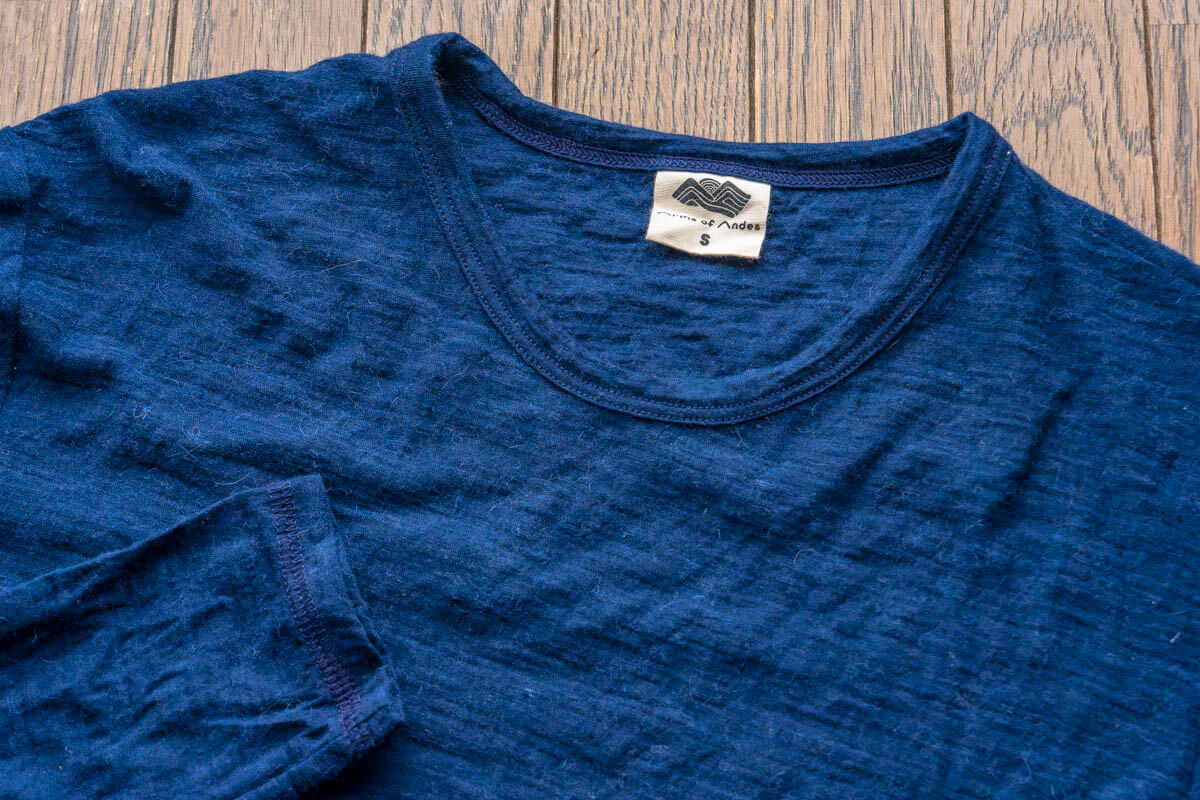
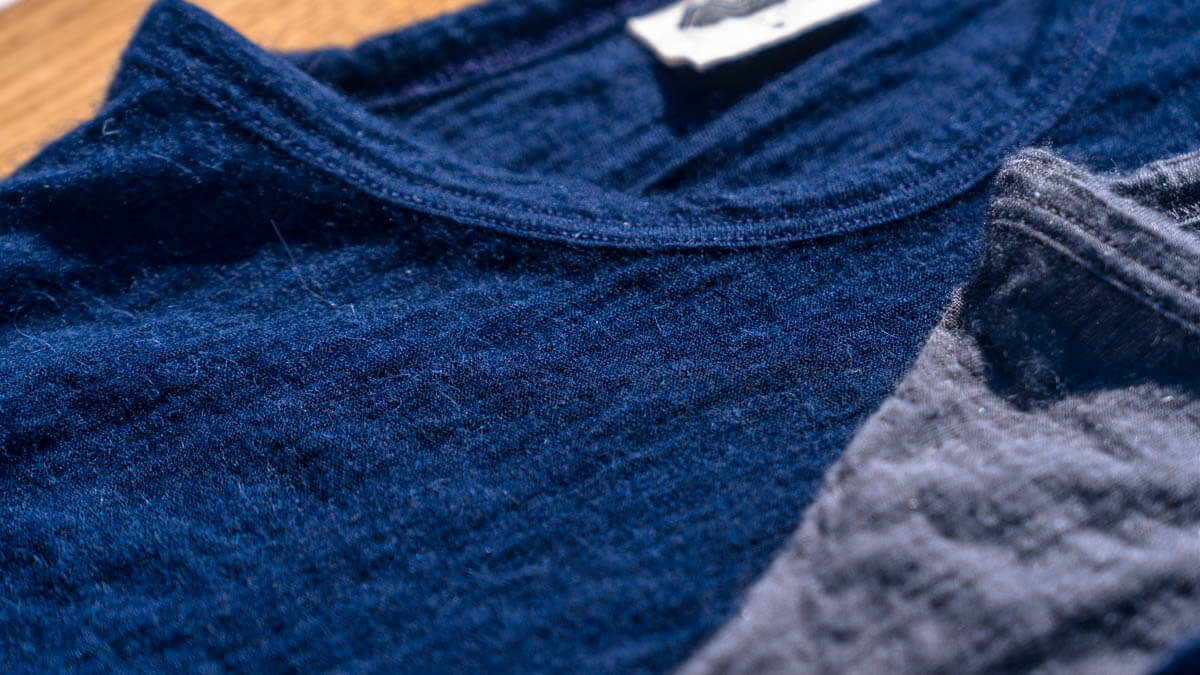
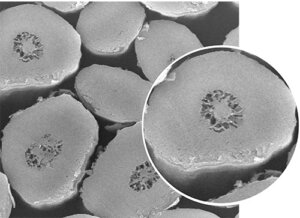
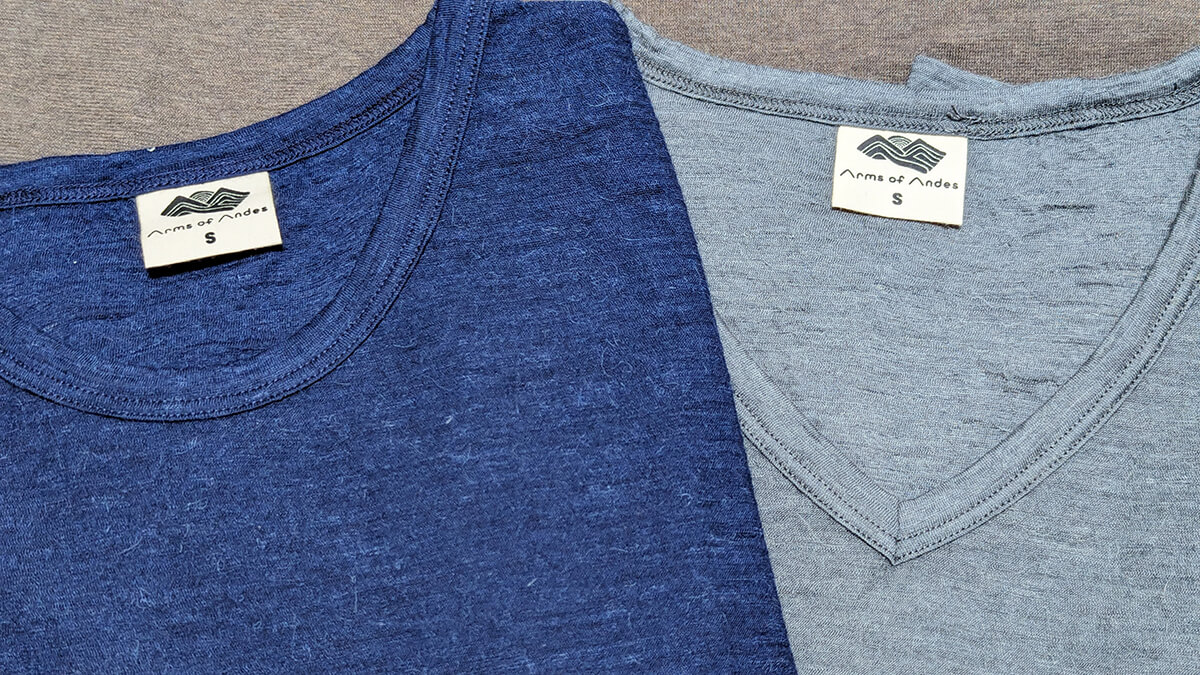
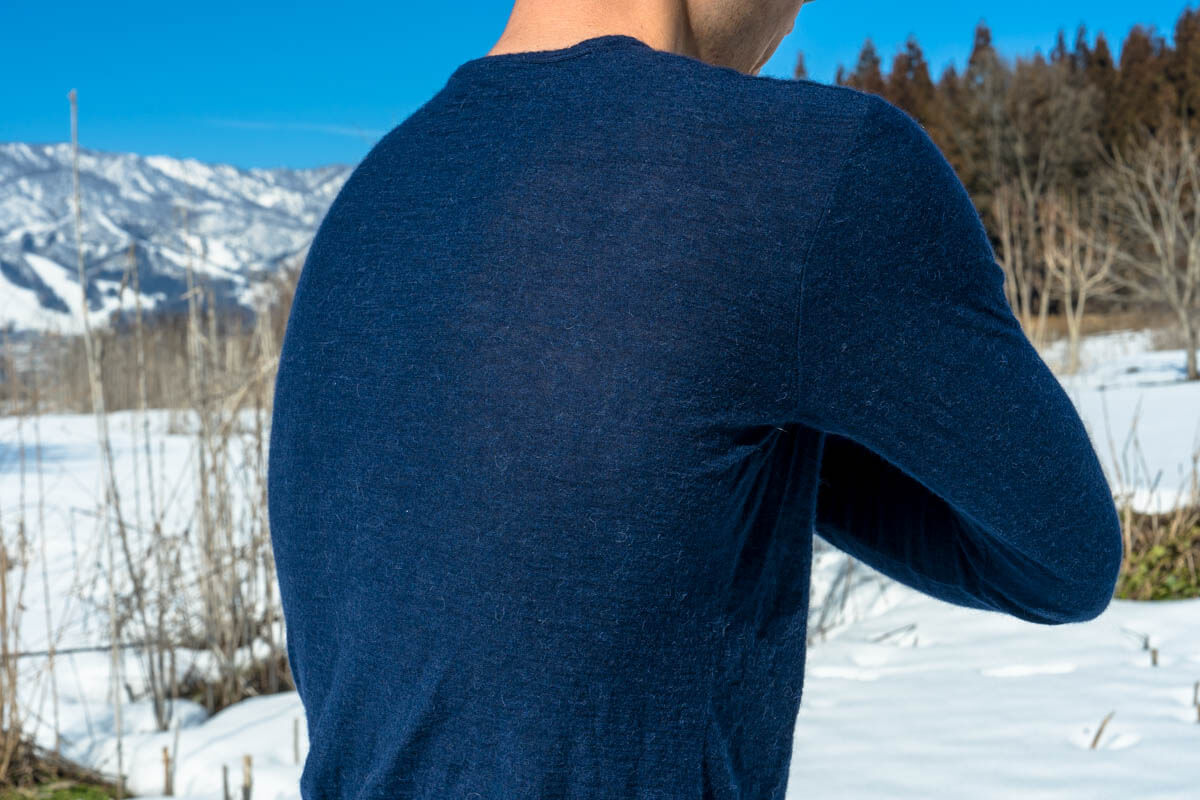

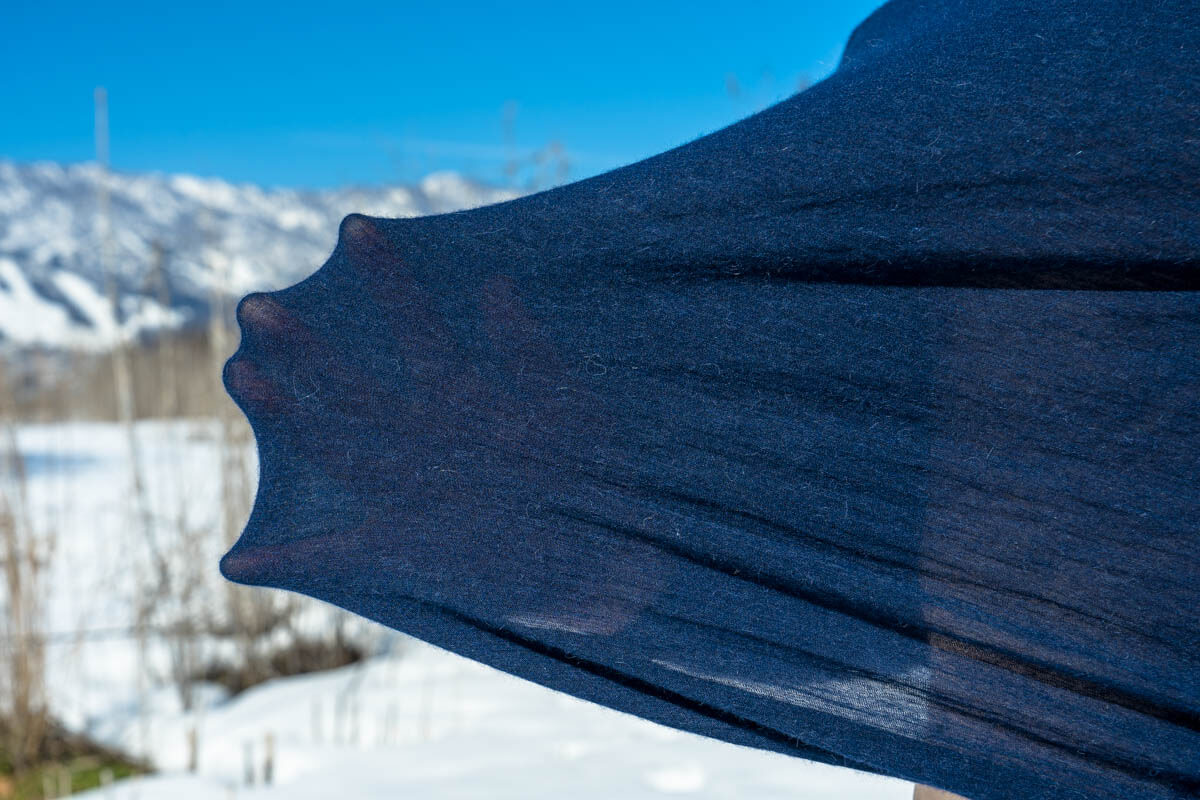
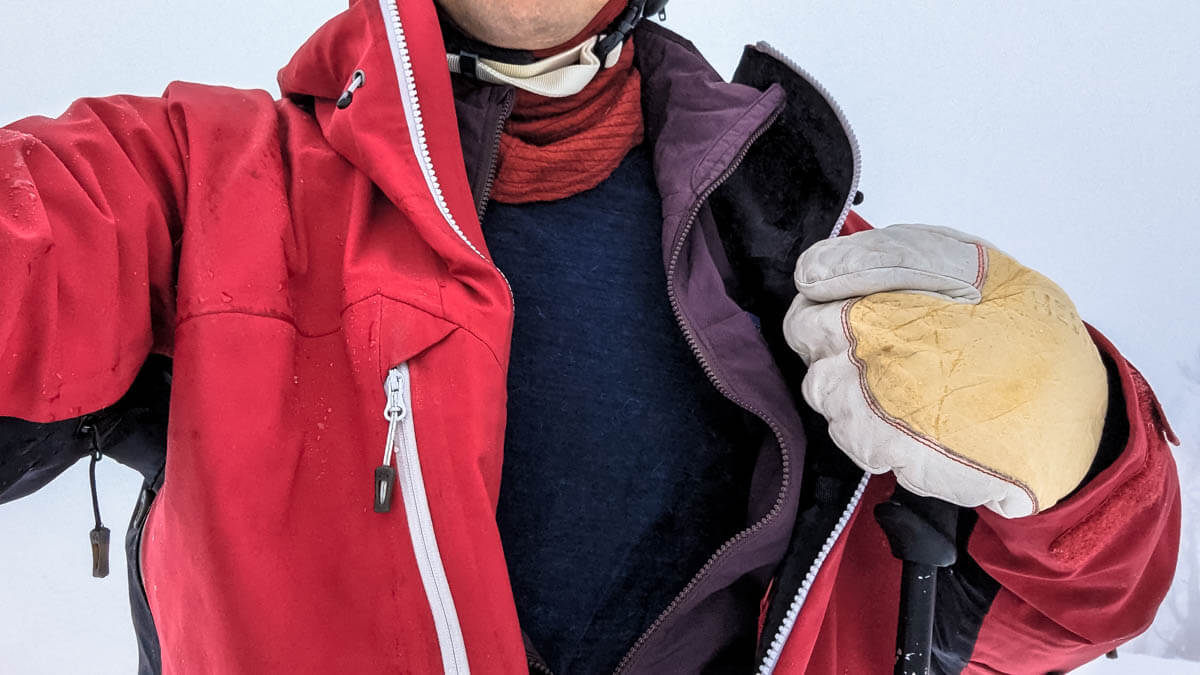
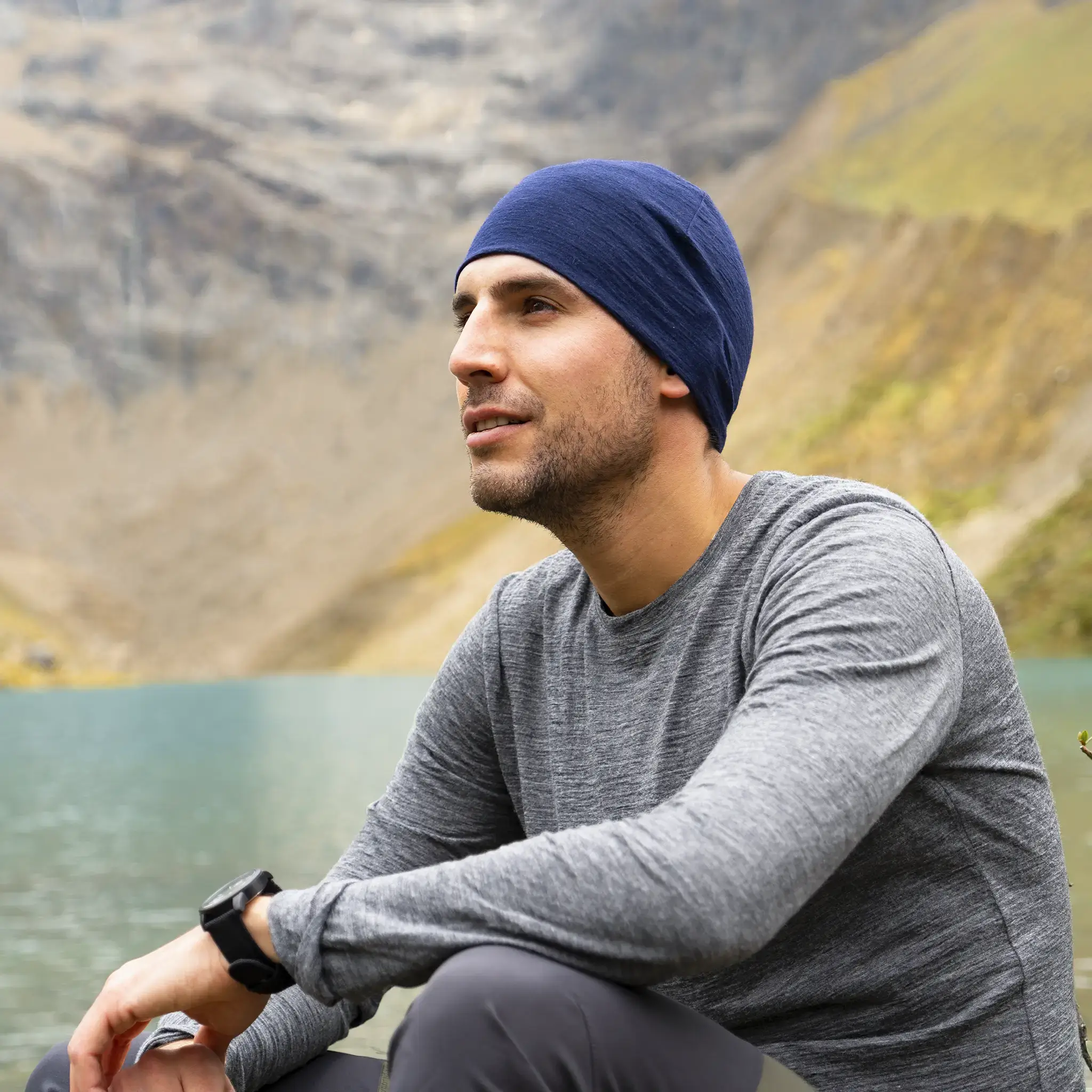
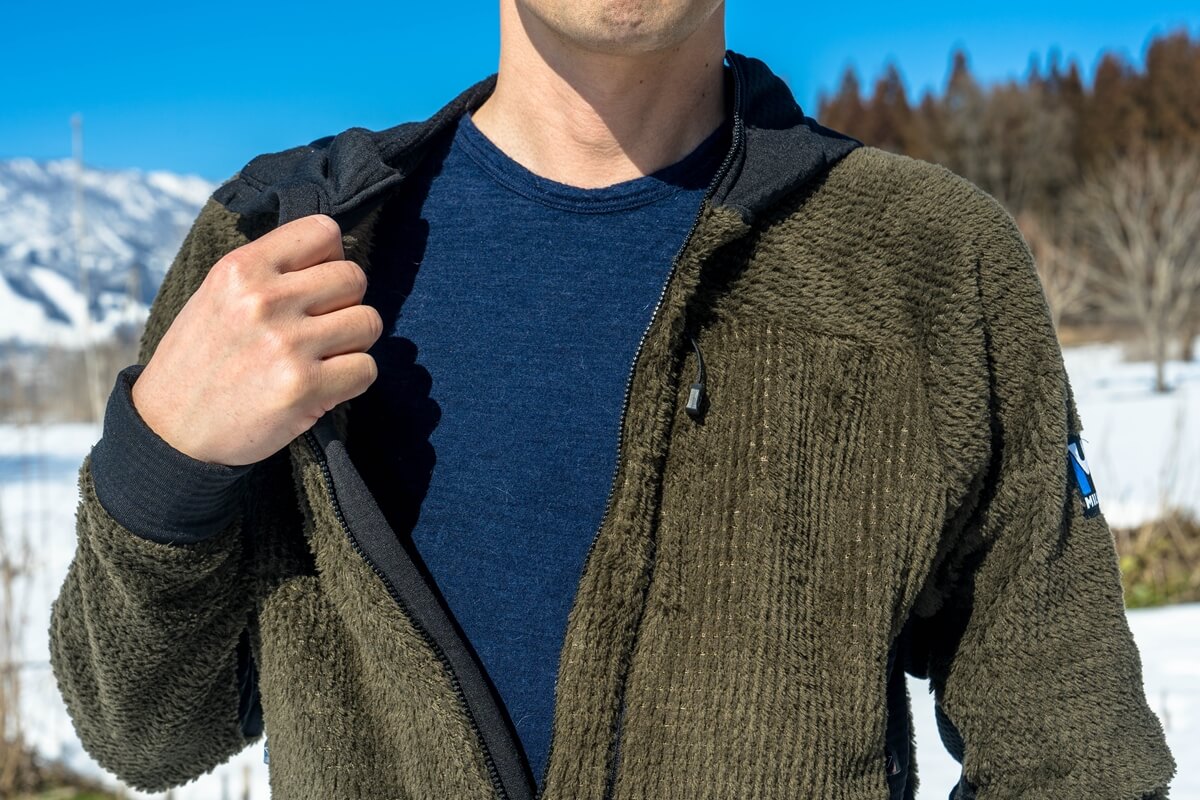
 [A self-paying review without any consideration] Workman's Merino wool underwear and accessories are seriously ranked from the perspective of a minimalist hiker [Can you use it on the mountains? 】
[A self-paying review without any consideration] Workman's Merino wool underwear and accessories are seriously ranked from the perspective of a minimalist hiker [Can you use it on the mountains? 】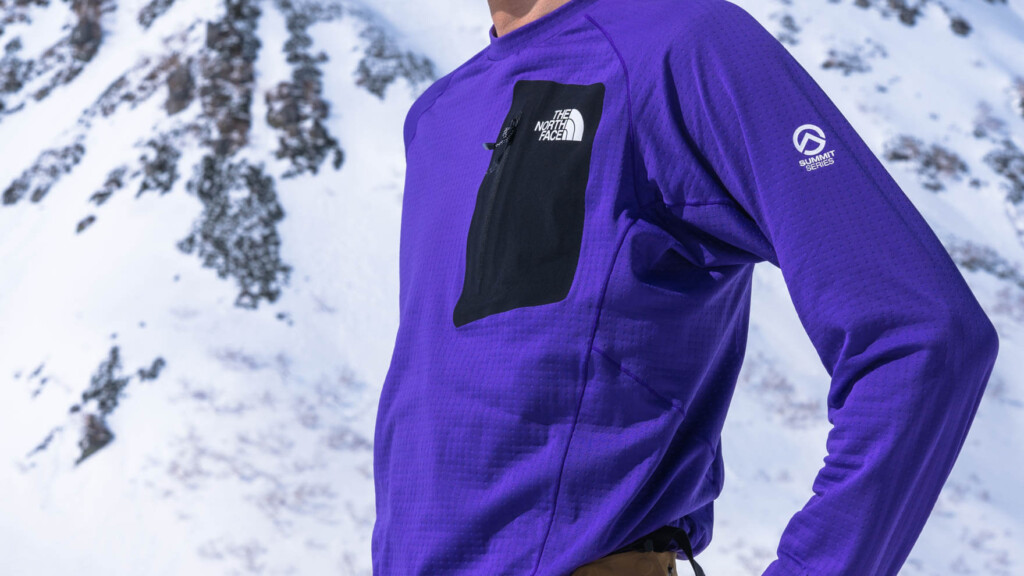 [A self-paying review without any consideration] Future is here! THE NORTH FACE Expedition Dry Dot Crew Sweat-absorbing, quick-drying, and smooth. A dangerous guy who can play multiple roles on just one card
[A self-paying review without any consideration] Future is here! THE NORTH FACE Expedition Dry Dot Crew Sweat-absorbing, quick-drying, and smooth. A dangerous guy who can play multiple roles on just one card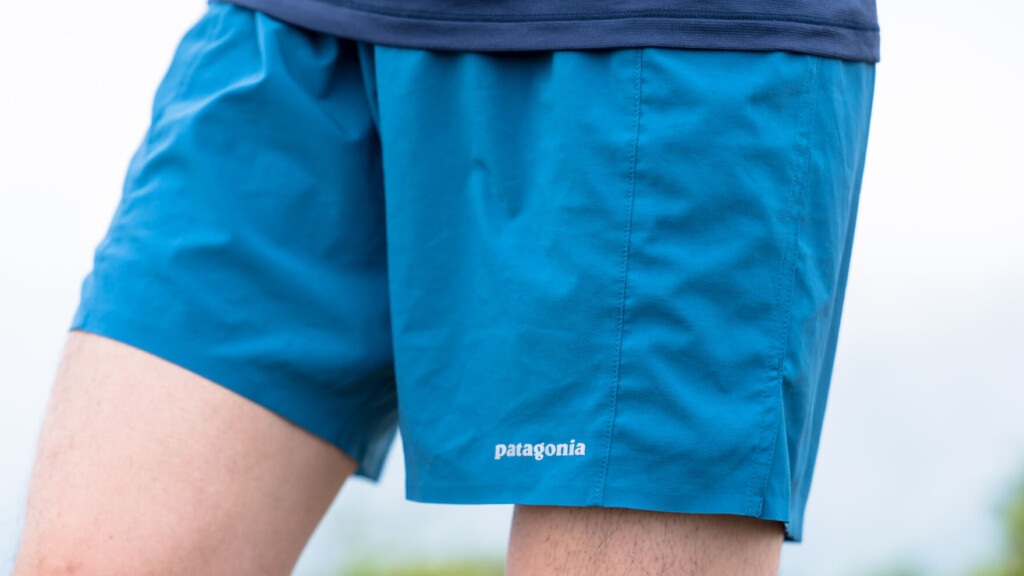 [Payment-free review without any consideration] Patagonia Strider Pro Shorts solved all the problems with spring and summer low mountain pants
[Payment-free review without any consideration] Patagonia Strider Pro Shorts solved all the problems with spring and summer low mountain pants [A self-paying review without any consideration] NEMO Dragonfly Bike Pack 1P It's a waste to just leave it for touring purposes! A self-supporting tent that is comfortable and convenient for mountain climbing
[A self-paying review without any consideration] NEMO Dragonfly Bike Pack 1P It's a waste to just leave it for touring purposes! A self-supporting tent that is comfortable and convenient for mountain climbing